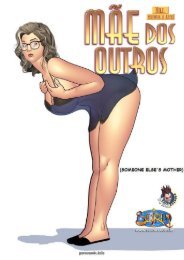AmericanCinematographer201201
You also want an ePaper? Increase the reach of your titles
YUMPU automatically turns print PDFs into web optimized ePapers that Google loves.
◗ Cold Case
In an attempt to blend into society, Lisbeth adopts a more feminine style, donning a
blonde wig and dressing conventionally.
novel. “The notion of these horrors,
these particularly evil doings, taking
place in an environment that’s icy,
snowy and somewhat inhospitable just
seemed right to me,” says Fincher. “I
couldn’t see setting the story anywhere
else. In Northern Europe, you’re cut off
from the rest of the world a good
portion of the year in a very unique
place. The people are hearty, and the
winters are very hard. I’m happy we
didn’t transpose the story to Seattle or
Montreal or, worse, play Montreal for
Sweden.”
However, the unique properties
of natural light at that latitude presented
some challenges. At summer’s peak,
Stockholm experiences 19 hours of
daylight, and at winter’s peak, just six
hours. Moreover, the winter sun barely
makes it off the horizon, even at “high
noon,” and the summer sun typically
reaches a point about 54 degrees off the
horizon at the height of the day.
“There’s a reason why Sven
Nykvist’s movies look like they do!”
Fincher notes with a laugh, referring to
the late ASC cinematographer who was
famous for his collaborations with
fellow Swede Ingmar Bergman.
Early in his career, Cronenweth
worked with Nykvist as a camera assistant
and operator. “Sven brought his
own version of soft light to all of his
movies,” he says. “He was very inspired
by the light of his hometown. In the
summer, it almost never gets dark, and
because you’re so far north, the sun can
set and then rise again, about an hour
later, in almost exactly the same place. If
you want a dawn shot, dawn can last two
hours! The light changes so much
throughout the year that it’s very challenging
on a project as long as this one.”
“We had short nights when we
got there and really long nights when we
left,” adds Fincher. “It can be very
disconcerting if you’re not used to a sixhour
day. You can start work in the
morning and then find the sun going
down at lunch.”
“We set out to embrace the
Swedish winter,” says Cronenweth. “It’s
a strong element in the story, almost a
character of its own, and we spent a lot
of time out in the snow with those very
unique light tonalities. We embraced all
of the idiosyncrasies of the locations.”
The biting cold of winter gave rise
to one of the production’s few equipment
problems: the low temps caused
some of the floating elements in the
Arri/Zeiss Master Primes to misalign,
so the lens’s witness marks were off.
“The Master Primes have seven floating
42 January 2012 American Cinematographer













